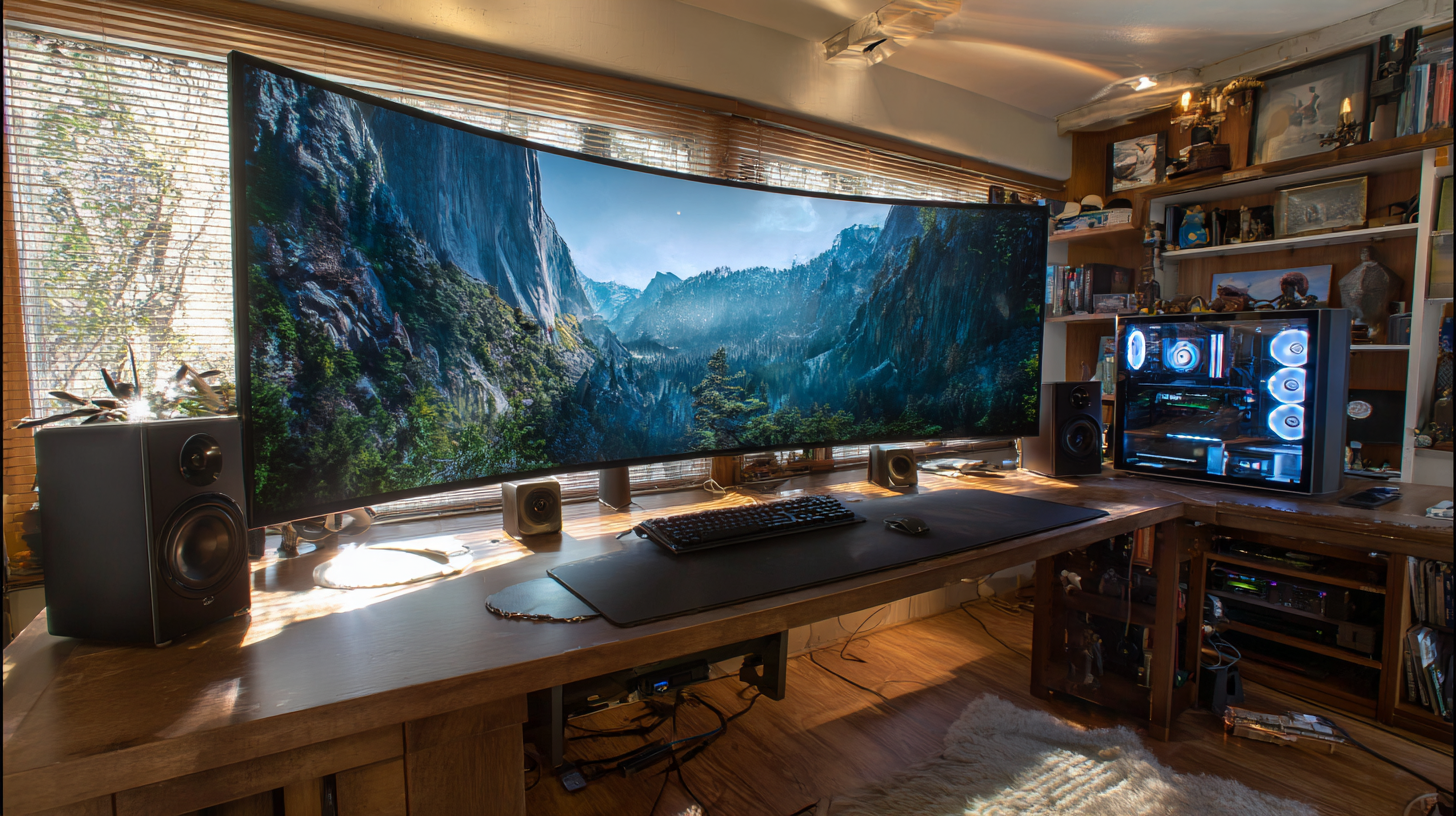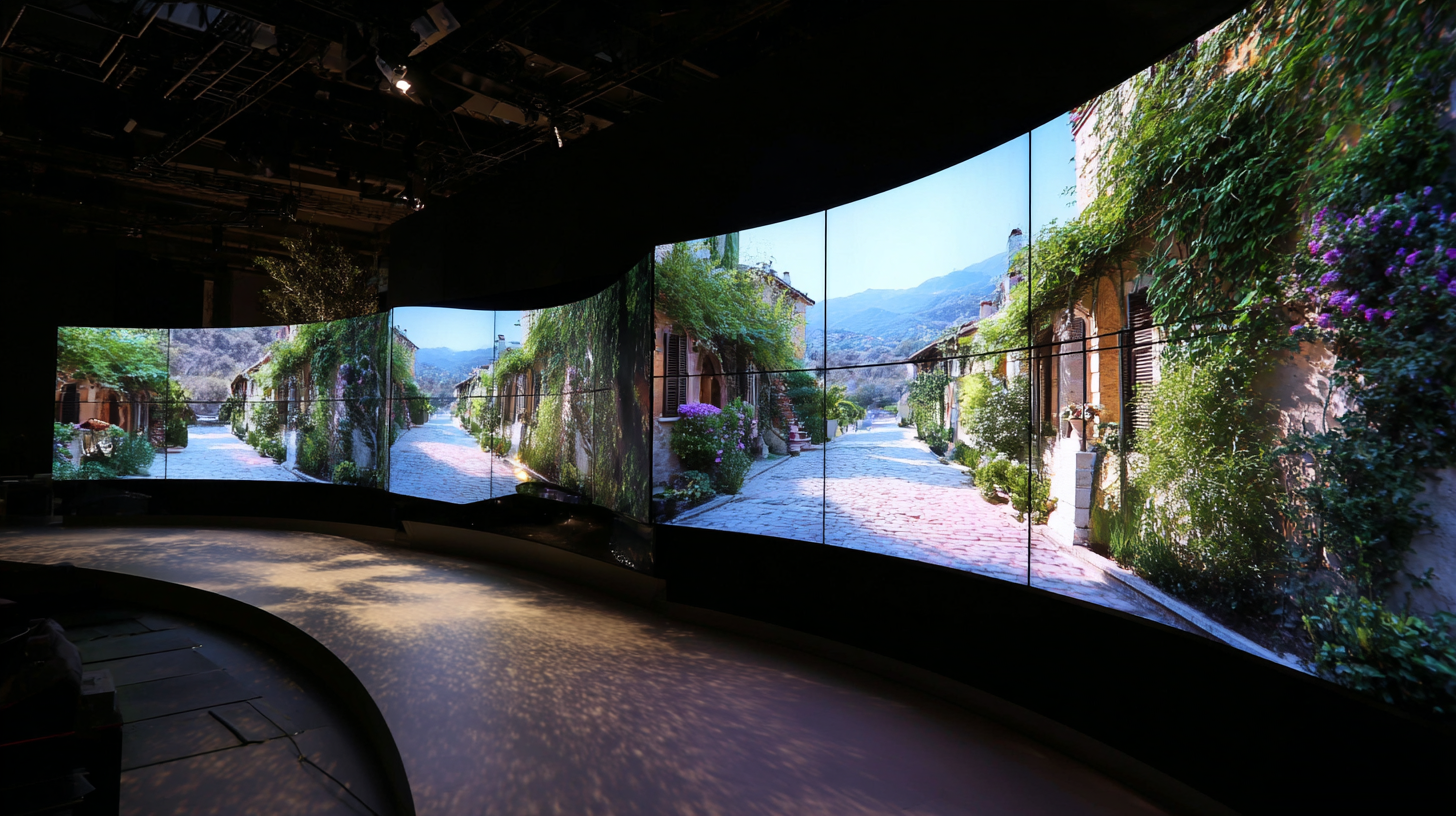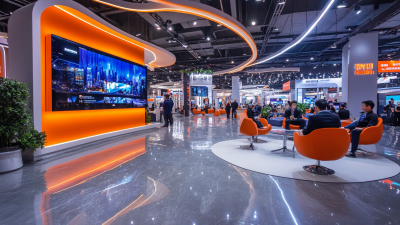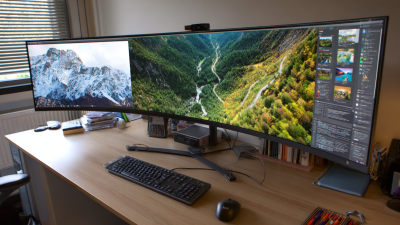Leave Your Message
- Phone
- E-mail
- Whatsapp


As home entertainment systems evolve, the technology powering our viewing experiences is becoming increasingly sophisticated. One of the most exciting advancements in this realm is Curved Display technology, which offers a unique way to enhance the way we consume media. Unlike traditional flat screens, Curved Displays are designed to wrap around the viewer's field of vision, creating a more immersive and engaging experience. By optimizing the viewing angle and minimizing reflections, this technology ensures that every scene is brought to life with stunning clarity and detail.

As we delve into the benefits of Curved Display technology, we will explore how it can transform home entertainment, offering advantages such as improved comfort, enhanced depth perception, and a more captivating cinematic experience. Whether you're a movie buff or a gaming enthusiast, understanding the potential of Curved Displays can help you make informed decisions about upgrading your home theater setup.
Curved display technology has transformed the visual experience in home entertainment systems, offering distinct advantages that enhance immersion and comfort. One of the key benefits of curved displays is their ability to fill the viewer's field of vision more effectively, creating a sense of depth and realism. According to recent industry reports, users of curved monitors experience a reduction in eye strain by up to 30% compared to flat screens, allowing for longer viewing sessions without discomfort. This feature is particularly beneficial for both gamers and movie enthusiasts seeking a more engaging experience.
Moreover, the ultra-wide aspect ratio commonly found in curved displays facilitates an expansive viewing surface, which is advantageous for multi-tasking and gaming. A study indicated that curved monitors can improve peripheral vision, making transitions between screen elements smoother. For those looking to optimize their setup, it is recommended to position the monitor at eye level and at a slight angle to maximize the benefits of curvature.
Tips for enhancing your curved display experience include adjusting brightness and contrast settings to suit your environment, ensuring proper distance from the screen to fully enjoy the immersive experience, and utilizing software that supports high-resolution output to take advantage of the monitor's capabilities. By implementing these strategies, users can unlock the full potential of their curved display technology for an unparalleled home entertainment experience.
Curved display technology has gained prominence in home entertainment systems, largely due to its psychological impact on viewers. Research indicates that curved screens can create a more immersive experience by mimicking the natural arc of human vision. According to a report from the Consumer Technology Association (CTA), 62% of viewers felt more engaged while watching content on a curved display compared to traditional flat screens. This enhanced engagement is primarily attributed to the curved format's ability to draw viewers into the viewing experience, effectively making them feel like part of the action.
 Additionally, studies published in the Journal of Display Technology highlight the advantages of curved screens in reducing eye strain. The progressive curvature aligns more closely with the user's field of vision, allowing for a more comfortable viewing experience, particularly during lengthy sessions. A survey conducted by the International Display Consortium found that 70% of users reported less fatigue while watching movies on curved displays compared to flat-screen alternatives. This psychological comfort can significantly enhance overall satisfaction with home entertainment systems, making curved displays an appealing choice for consumers seeking both quality and immersion.
Additionally, studies published in the Journal of Display Technology highlight the advantages of curved screens in reducing eye strain. The progressive curvature aligns more closely with the user's field of vision, allowing for a more comfortable viewing experience, particularly during lengthy sessions. A survey conducted by the International Display Consortium found that 70% of users reported less fatigue while watching movies on curved displays compared to flat-screen alternatives. This psychological comfort can significantly enhance overall satisfaction with home entertainment systems, making curved displays an appealing choice for consumers seeking both quality and immersion.
Curved displays have been gaining popularity in home entertainment systems, especially when compared to traditional flat displays. One of the primary advantages of curved displays is their ability to create a more immersive viewing experience. The curvature of the screen allows for a wider field of view and makes the viewer feel more surrounded by the content, which is particularly beneficial when watching movies. This added depth can enhance emotional engagement, drawing viewers further into the story.
Additionally, curved screens can minimize distortion and provide a more uniform viewing distance across the display, unlike flat screens where the edges may appear further away. This feature is especially advantageous during long movie sessions, as it can reduce eye strain and improve comfort. Furthermore, the latest advancements in display technology have led to greater resolution and vibrancy in curved displays, making them an appealing choice not only for cinematic experiences but also for gaming and general media consumption. When considering which type of display is better for movies, the immersive quality and viewer comfort of curved displays often place them ahead of their flat counterparts.
| Feature | Curved Displays | Flat Displays |
|---|---|---|
| Field of View | Enhanced immersion with a wider field of view | Limited immersion, narrower field of view |
| Viewing Angles | Better viewing angles with minimal distortion | Distortion may occur at extreme angles |
| Aesthetic Appeal | Sleek design that enhances modern décor | Classic design but can appear bulkier |
| Price Range | Generally higher due to advanced technology | Varies widely, often more budget-friendly |
| Best Use Cases | Ideal for cinematic experiences and gaming | Suitable for general viewing and traditional setups |
The advent of curved display technology has significantly enhanced home entertainment experiences, particularly by optimizing viewing angles and minimizing distortion. Curved displays create a more immersive viewing environment by mimicking the natural curvature of the human eye, allowing for a more uniform distance across the screen. According to recent industry reports, screens with curved designs can enhance the field of vision by up to 30%, providing a clearer and more engaging visual experience compared to traditional flat screens.
This technology becomes particularly beneficial for ultrawide displays, where the curvature can reduce the effects of distortion often encountered at the edges of flat screens. Research indicates that curved displays can decrease motion blur and enhance color consistency across the viewing surface, making them ideal for both gaming and movie-watching. As consumer preferences evolve, the demand for curved models has surged, with some estimates suggesting that sales for these types of displays have increased by over 40% in the past year. By prioritizing optimal viewing angles, curved displays not only elevate entertainment standards but also cater to the increasing desire for a high-quality, immersive experience at home.

The integration of curved display technology in modern home theater setups offers a transformative experience for viewers. Curved displays provide a more immersive viewing angle, allowing for enhanced depth perception and a greater field of vision, which is particularly beneficial in large rooms where conventional flat screens might fall short. According to recent industry reports, curved screens can reduce viewing distortion and deliver a superior image quality by minimizing reflections and glare, which is a crucial factor in creating a cinematic atmosphere at home.
With advancements in display technology highlighted at events like the recent display week, manufacturers are increasingly focusing on improving the visual experience. For instance, the noticeable growth in popularity of curved monitors suggests a shift in consumer preference towards displays that not only function effectively for gaming but also enhance movie watching experiences. Research indicates that home theater enthusiasts are highly satisfied with the immersive experiences provided by these screens, supporting the trend towards integrating such technologies into home installations. This development aligns with the resurgence of dedicated home theaters, which are becoming central to modern home designs as consumers seek premium entertainment solutions.






